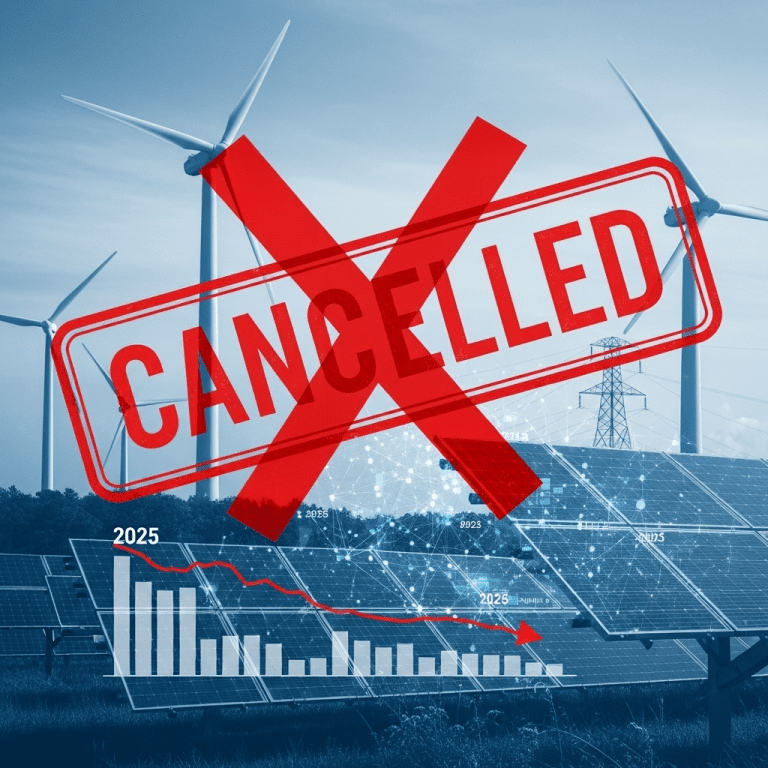The announcement that the Department of Energy cancels $7.5B of clean energy projects in mostly blue states has sent shockwaves through the renewable energy industry and state governments. As the United States strives to meet ambitious climate goals in 2025, this decision triggers intense scrutiny over its motivations, beneficiaries, and long-term consequences for the transition to green technology.
Why the Department of Energy Cancels $7.5B of Clean Energy Projects in Mostly Blue States
The federal action to rescind funding from clean energy initiatives in predominantly Democratic-leaning states has raised questions among technology leaders and policy experts. According to DOE spokespeople, the cancellations aim to “reevaluate project viability, fiscal responsibility, and regional equity.” However, critics argue that these projects, including large-scale solar farms, advanced wind installations, and innovative grid modernization plans, were pivotal for meeting state and national emissions targets.
Industry insiders note that many of these canceled projects were located in states like California, New York, Illinois, and Massachusetts. These regions have been strong proponents of renewable energy mandates, electric vehicle incentives, and cutting-edge storage technologies. The DOE’s shift in funding priorities could realign the clean tech landscape in ways that may affect the overall competitiveness and timing of the US clean energy transition in 2025.
Political Ramifications and the Blue State Divide
Analysts see the decision as having potential political undertones, given the allocation geography. Blue states have historically driven clean energy innovation and have been instrumental in creating progressive carbon reduction standards. Some political leaders have voiced concerns that the Department of Energy’s move could be an attempt to recalibrate federal investment toward states that have lagged in green tech adoption, or to penalize states for aggressive climate stances.
This action may further deepen the technological and policy divides between blue states and other regions. As investment dollars shift away from established green tech hubs, the ripple effect on local economies, job creation, and clean tech startups could be significant. For a broader perspective on the financial impacts of energy decisions, visit the investment strategy portal.
Clean Energy Innovation at Risk
What Projects Are Impacted?
The canceled initiatives encompass a wide range of technologies that were set to deploy in 2025 and beyond. Solar photovoltaic installations, offshore wind farms, hydrogen infrastructure pilots, and smart grid modernizations are among the most prominent. Many of these projects had already gone through rigorous approval processes and had started initial development phases. States anticipated thousands of new high-tech jobs and substantial emissions reductions.
The Effect on Technology Development
By removing such a large swath of public funding, the DOE’s decision may stall advancements in storage, AI-powered grid management, and scalable clean energy integration. According to experts, temporary halts in momentum can lead to the loss of private capital, reduce investor confidence, and slow the commercialization of emerging climate technologies. For more analysis on technology trends and risk management, explore this financial technology resource.
The Path Forward After Canceled DOE Projects
State and Private Sector Response
State governments and the private sector are already mobilizing to address the gap left by federal cancellations. Blue state leaders have announced intentions to seek alternative funding, bolster local incentives, and form public-private partnerships to keep flagship projects alive. Some experts are optimistic that the challenge could spur innovative financing models and accelerate the decentralization of energy investment.
Impact on National Clean Energy Goals for 2025
With 2025 fast approaching, the ability for the US to meet its international climate commitments now faces increased uncertainty. The canceled projects represented a meaningful share of the clean energy capacity additions projected for this decade. Unless counterbalanced by new projects elsewhere, or a swift mobilization of alternative resources, national targets may need to be revised for accuracy and feasibility. To monitor future developments in green energy policy, bookmark this energy news tracker.
Conclusion: Navigating the Future of US Clean Energy
The decision by the Department of Energy to cancel $7.5B of clean energy projects in mostly blue states underscores the complexities of federal climate policy in 2025. As stakeholders adapt to shifting funding landscapes, the journey toward a resilient, innovative, and equitable energy system remains fraught with both challenges and opportunities. Continued vigilance, creative partnerships, and technology-forward planning will be crucial in moving the US closer to a sustainable future despite evolving political and fiscal winds.









